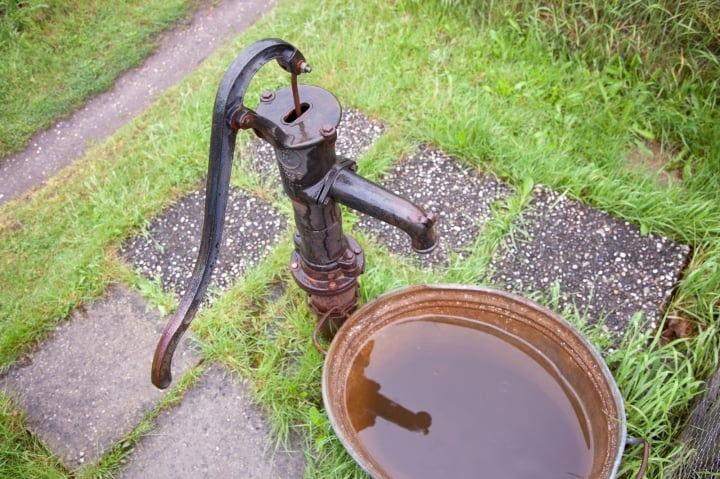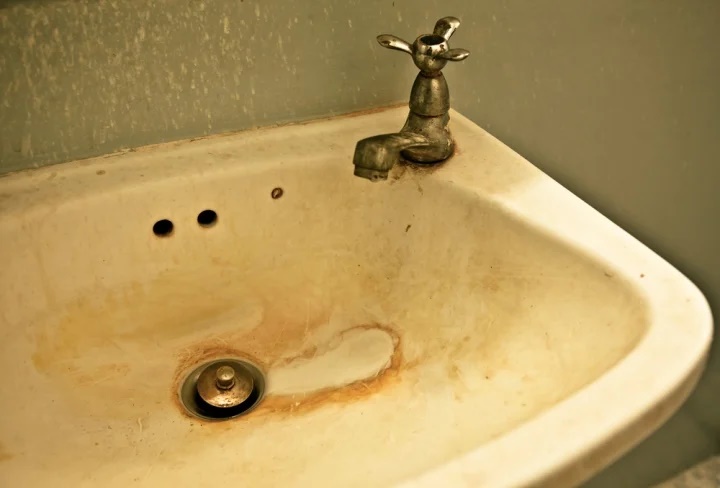With the increasingly widespread coverage of the water supply system, the number of wells in Vietnam is now only a small fraction of what it was decades ago. However, in many areas, alongside the tap water, some families still maintain wells for various purposes and as a backup in case of water shortage.
Wells are usually located outside of houses and drilled deep into the ground to extract water from underground sources.

Why is well water often yellow? (Image: Aqua Pump)
Well water is cool, but its color can be confusing for many people. Besides wells that provide water for irrigation purposes, many other cases have left users puzzled by the yellow color and unpleasant odor of well water.
Why is well water yellow?
In the past, groundwater sources were still clean, so we could directly use well water without the need for pre-treatment. However, nowadays, the development of industries, agricultural production activities that involve the use of chemicals, and daily human activities have seriously contaminated groundwater sources.
The reason for the yellow color of well water is the contamination of heavy metals, specifically iron contamination.
Iron ions in well water typically exist as Fe2+ or iron oxide II, which does not form precipitates. They remain suspended in water, and when the water comes into contact with air, iron ions become oxidized and precipitate, giving the water a yellow color and an unpleasant odor.
Yellow-tinged and odorous well water cannot be used directly for domestic purposes because it not only affects human health but also damages household supplies and equipment.
Identifying iron-contaminated well water
Iron-contaminated well water appears to be very clear when first pumped, but it has a strong odor. After exposure to air, it turns yellow or reddish-brown and has a foamy appearance.
Iron-contaminated water has a high content of iron 2 (Fe2+), giving it a metallic odor and a slightly sour taste.
In addition to relying on color and odor, you can apply the following methods to determine whether or not your well water is contaminated with iron:
– Test with banana peel: Cut the banana tree trunk or peel horizontally, place well water on the cut surface. If it changes color, then it is iron-contaminated water. To determine the extent of iron contamination, you can pour the banana sap into a container of water. The darker red the water becomes, the heavier the iron contamination.
– Test with tea: Prepare a concentrated tea blend and pour it into a container of water. If the water turns dark purple, it means heavy iron contamination.
What are the harmful effects of iron-contaminated well water?
Using untreated well water for bathing, drinking, and washing can have negative effects such as:
– Causing skin irritation and allergies.
– Causing gastrointestinal infections, acute diarrhea. In the long run, it can have detrimental effects on the digestive system.
– Causing kidney stones, urinary stones due to the accumulation of toxins in the body.

Iron-contaminated well water affects human health and damages household appliances and equipment. (Image: Action Plumbing)
– Causing corrosion of household items, clogging of sink pipes and showerheads, and damage to water heaters. Iron-contaminated well water causes pipe corrosion, water leakage, and makes it easier for bacteria to enter the water source.
– Staining clothes, requiring more soap but difficult to clean.
Source: VTC.vn
































